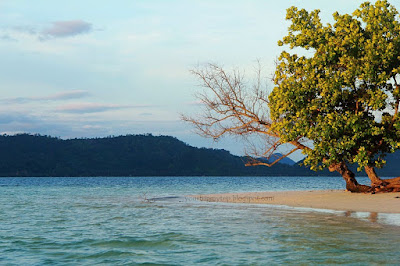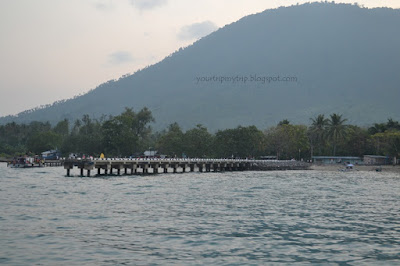
Ijen Crater, East Java : Volcano, Acid Lake and Blue Flames
Ijen Crater, or known to Indonesians as Kawah Ijen,
is one of the top recommended volcano in Indonesia to be visited. This
active crater of 134 sq km has a landscape of volcanic cones of both Mount Ijen and Mount Merapi (not to be confused with the famous Mount Merapi in Central Java).
This group of stratovolcanoes lies in East Java. Inside the crater
you will see a magnificent turquoise sulphur lake that exudes flames,
blue fire at night and smoky white in the day.
Here you will also find many sulphur collectors that hike up here to
mine the minerals of Kawah Ijen but this had been highlighted badly
recently in the media due to the fumes being harmful to human and its
extremely harsh working conditions.
Where is it
Ijen Crater lies nearby Banyuwangi and
Bondowoso. Ijen plateau stood as the centrepoint of the large mountain
range west of Banyuwangi and as part of Baluran National Park to the
north.
Why go
Come to Ijen Crater for the largest acidic lake in the world
and for the mesmerizing blue flames in the night. Besides it is one of
the best volcanic mountain of Indonesia with this one brimming with the
rare sulphurs.
When is the best time to go
June – August where there is less rain but more tourist
But that being said, Indonesia being a fairly mild weather of just rain and shine, most of the time is a good to go to Ijen Crater, just check for local weather as you head there.
Also try to avoid weekends if you do not want the crowd.
But that being said, Indonesia being a fairly mild weather of just rain and shine, most of the time is a good to go to Ijen Crater, just check for local weather as you head there.
Also try to avoid weekends if you do not want the crowd.
What to see
World’s largest acidic lake, which is in the brilliant turquoise color that captures not only the sunlight but every traveler’s heart.
Catch the miners hard at work, carrying heavy laden
basket of sulphur though you may be disturbed by it and feel sorry for
them. Note in mind that the sulphur fumes are poisonous and these miners
are subjected to it daily for long hard-laboured hours.
There are coffee plantations cover the Ijen caldera
floor where many travelers head there to visit the waterfalls, hot
springs or just enjoy the dramatic volcanic scenery.
What to do
Hiking up to Ijen Crater at night
There are few options for visiting Ijen crater, you can either start at 2am or 4am to arrive at the top of the crater by daylight. Many travelers recommend to do the night hiking up to Ijen Crater to catch the magical blue flames or also known as blue fire. To get this you have to arrive at the top before sunrise of 6am. The hike up takes 1.5-2 hours averagely and can be quite steep The good thing is at this time there are not many other tourists around as well. After being mesmerized by the blue flames enough, you can sit back at the summit and wait for sunrise which offers another spectacular view.
There are few options for visiting Ijen crater, you can either start at 2am or 4am to arrive at the top of the crater by daylight. Many travelers recommend to do the night hiking up to Ijen Crater to catch the magical blue flames or also known as blue fire. To get this you have to arrive at the top before sunrise of 6am. The hike up takes 1.5-2 hours averagely and can be quite steep The good thing is at this time there are not many other tourists around as well. After being mesmerized by the blue flames enough, you can sit back at the summit and wait for sunrise which offers another spectacular view.
Walk around the Ijen crater rim
You can take a walk around the rim of Ijen crater or approach the lake which will take about 40 minutes walk.
You can take a walk around the rim of Ijen crater or approach the lake which will take about 40 minutes walk.
source: http://allindonesiatravel.com















































